"The main function of the museum has been to serve as a pedestal upon which a clique of socialites pose as patrons of the arts" -Dr. Albert C. Barnes
And so it has happened. Despite the heroic, award-winning film expose Art of The Steal, protests from a diverse chorus of appalled art lovers, and a truly valiant grassroots effort by a group of locals to stop it, the doors to the "New" Barnes Collection in shiny downtown Philadelphia opened to the public last weekend.
Theft is usually met with punishment by government, but when government is a conspirator in that theft it is met with fanfare and black tie cocktail parties. Such is the case with the greatest art heist in history - the stripping of the famed Barnes Collection from its intended home in Merion, Pennsylvania (which Henri Matisse himself once famously remarked was"The only sane place to see art in America") by some of the richest, most powerful people in the country and aided by the state of Pennsylvania and the City of Brotherly Larceny.
Albert C. Barnes, a wealthy physician in the early 20 century, was amazingly ahead of his time in terms of his tastes in artwork. When the art world that was rejected early modern art, Barnes passionately embraced it. By the time the rest of the world caught up with him, he had amassed the greatest collection of the genre on earth and had even become personally friendly with names like Matisse, Picasso, and others who would become giants. Eventually, of course, elitists who arrived late to the party coveted the collection. But by then Barnes would have nothing to do with them. As far as he was concerned, his collection would be a tool for democracy through education--never a backdrop for the privileged class.
Indeed, the later life of Dr. Barnes was filled with quarrel and disdain toward Philadelphia's elites -- particularly Walter Annenberg, the elitist of them all. When Barnes was suddenly killed in a gruesome 1951 car accident, he had already set up a Trust to manage his collection and the art school he'd set up to use it for inspiration and to study it. He was very explicit in his desire that his collection never, ever be broken up or even loaned out from the gallery building he had meticulously created for it in Merion. The Trust also instructed that when the original Trustees were gone (Barnes had no heirs), a majority of the Board members would be nominated by Lincoln University, the nation's oldest historically black institution of higher learning. As a lifelong progressive and civil rights advocate, had a great deal of faith in Lincoln and particularly its president, his friend Horace Mann Bond, father of modern day civil rights activist Dr. Julian Bond, who has been a great, if largely ignored, champion of the modern-day Barnes preservation cause. The stewardship by Lincoln seemed a fitting progression to Albert Barnes. Not so to covetous powerful white foundations lurking nearby.
Eventually, as a result of manipulation by self-interested members of the Philadelphia political and philanthropic elite, power over the Barnes Foundation Board and the $30+ billion art collection was wrestled away from Lincoln University.
Using the Court to overcome the express wishes of Dr. Barnes laid out in plain English in the Trust document, and after years of maneuvering by mayors of Philadelphia, the Governor of Pennsylvania, and most importantly Pennsylvania Attorneys General, the new board voted to move the Barnes collection to downtown Philadelphia, as the one thing Albert Barnes never wanted it to be -- a party house for plutocrats.
And now it's open. Touché, I guess. Some of my fellows will disagree with this, but my attitude is that those of us who fought it--who stood up for decency, for the legacy and wishes of Dr. Barnes not to mention the Art--must never forgive, never forget that the "New" Barnes is nothing less than a cultural crime scene, and never set foot in the place.
Post script / Bonus feature: The aforementioned documentary Art of the Steal rallied many outside of Philadelphia--myself included--to the cause of trying to help keep the Barnes in Merion. I reached out to director Don Argott and producer Sheena Joyce to get a few quick thoughts from them on the eve of the opening of the "New" Barnes:
Q: Here we stand on the eve of the opening of the "New" Barnes. Philly Inquirer and society folk are positively giddy. How are you feeling about it? Any plans to anything more on the subject like perhaps an epilogue to Art of the Steal?
Sheena: I am sad to see the "new" Barnes open on the Parkway. We should work to preserve something so special and historic, especially here in Philadelphia. As a resident of Philadelphia, I am also disappointed to see the City and the Commonwealth waste so much public money on moving a jewel box that did not need to be moved, as our schools, libraries, fire departments, police, and public services struggle to stay afloat.
Don: I think the most frustrating thing is the level of whitewashing that continues to go on when this is being reported on. Especially here in Philly, there has been a ton of cheerleading about how amazing this is going to be for the city, but no one talks about how much money it cost us taxpayers and how it plans to sustain itself in an already strained philanthropic environment in Philadelphia.
Q: Could you ever bring yourself to visit the new location?
Sheena & Don: While we will miss the art, we do not foresee ourselves visiting the McBarnes.
Q: The Los Angeles Times reported earlier this week that the central court of the new building is named for.....wait for it....Walter Annenberg. Reaction?
Sheena: I am not surprised in the least that there is an Annenberg Court. Just as Dr. Barnes would have wanted, no? We recently spoke to Nick Tinari, a character in our film, who reminded us that the Johnson Collection is housed in the Annenberg wing of the Philadelphia Museum of Art. It's a logical next step for Dr. Barnes' art to be stamped with the Annenberg name, as it seems to signify a political and cultural bullying here in Philadelphia.
